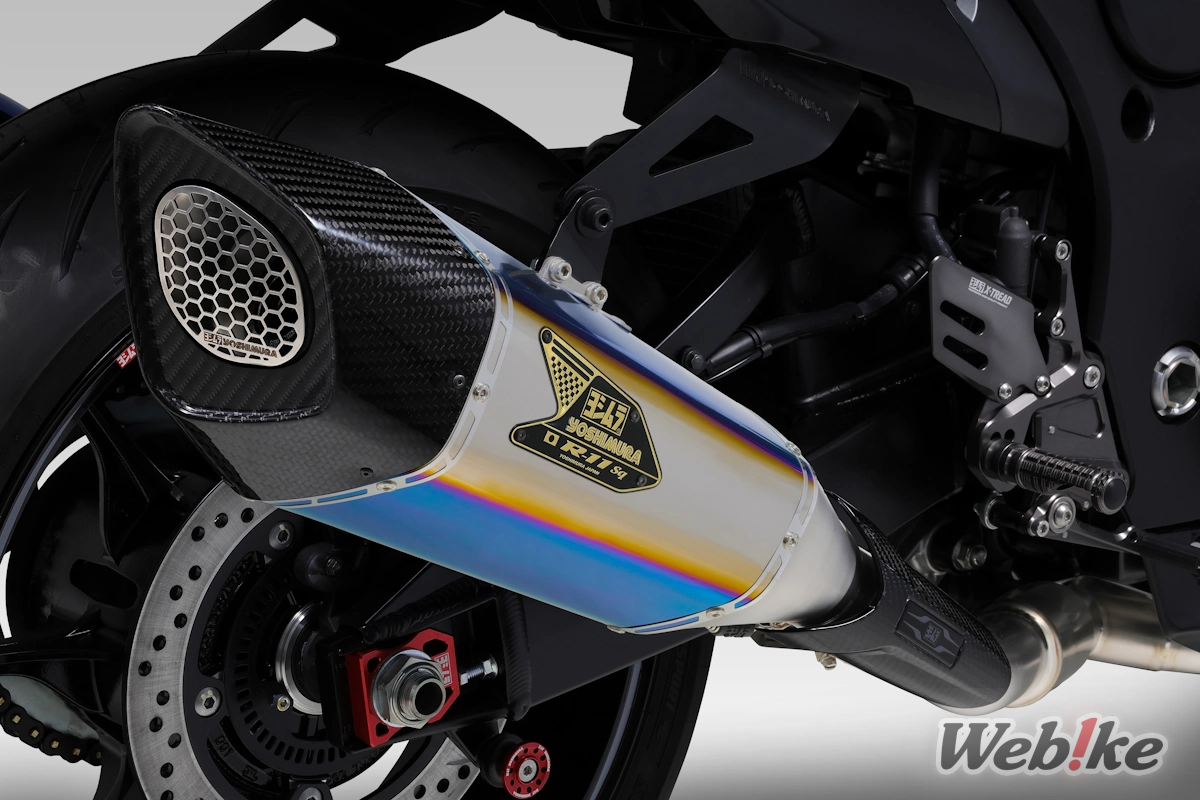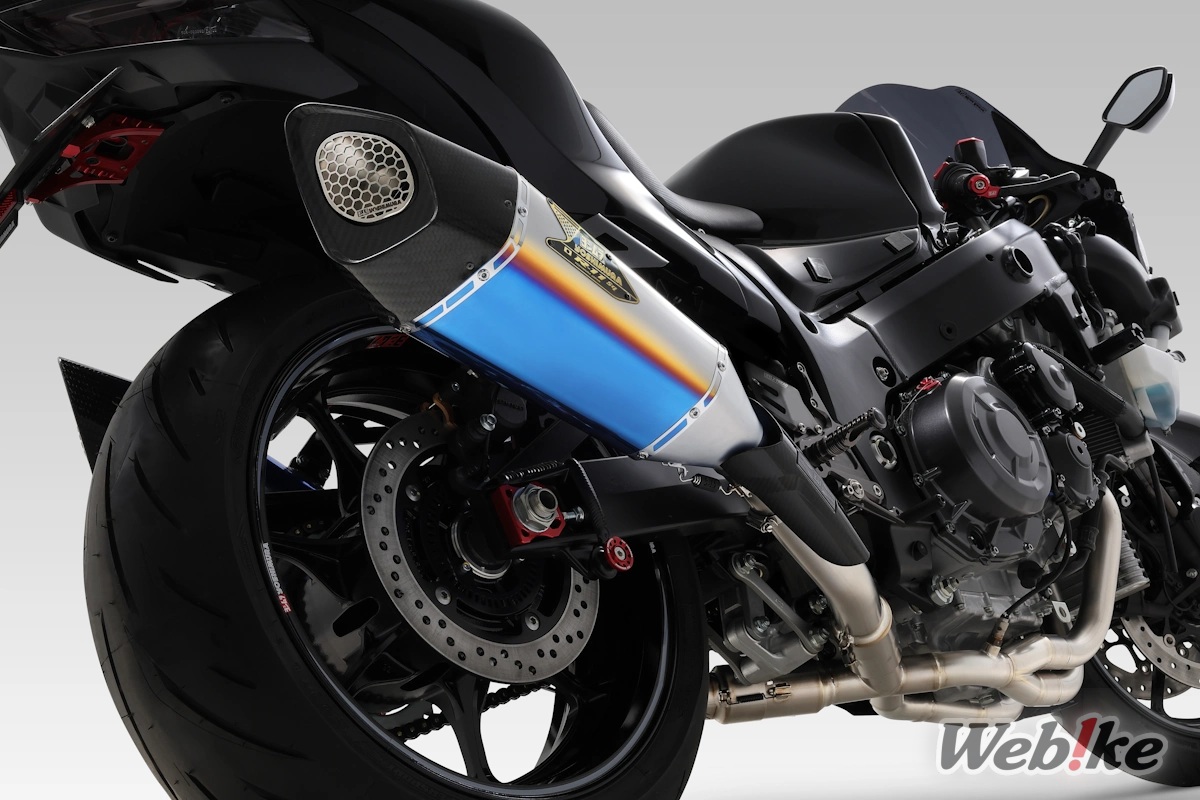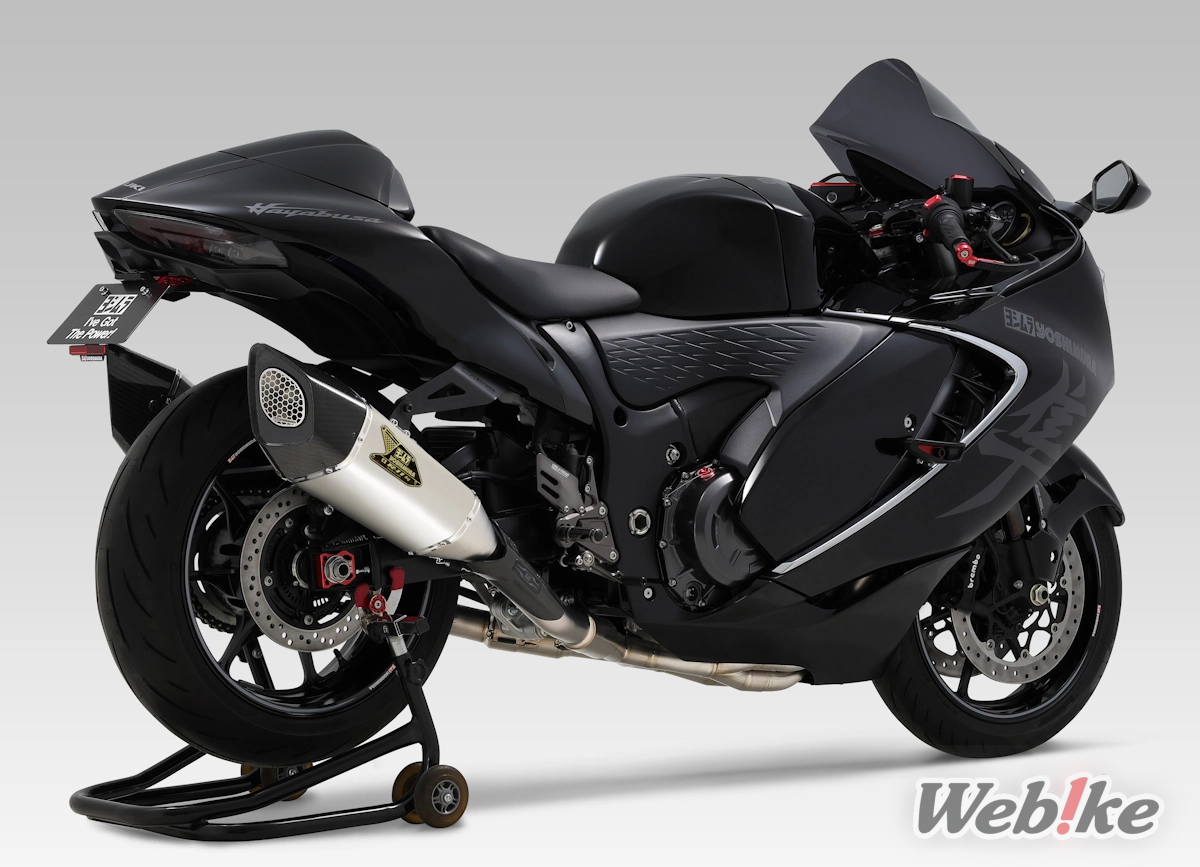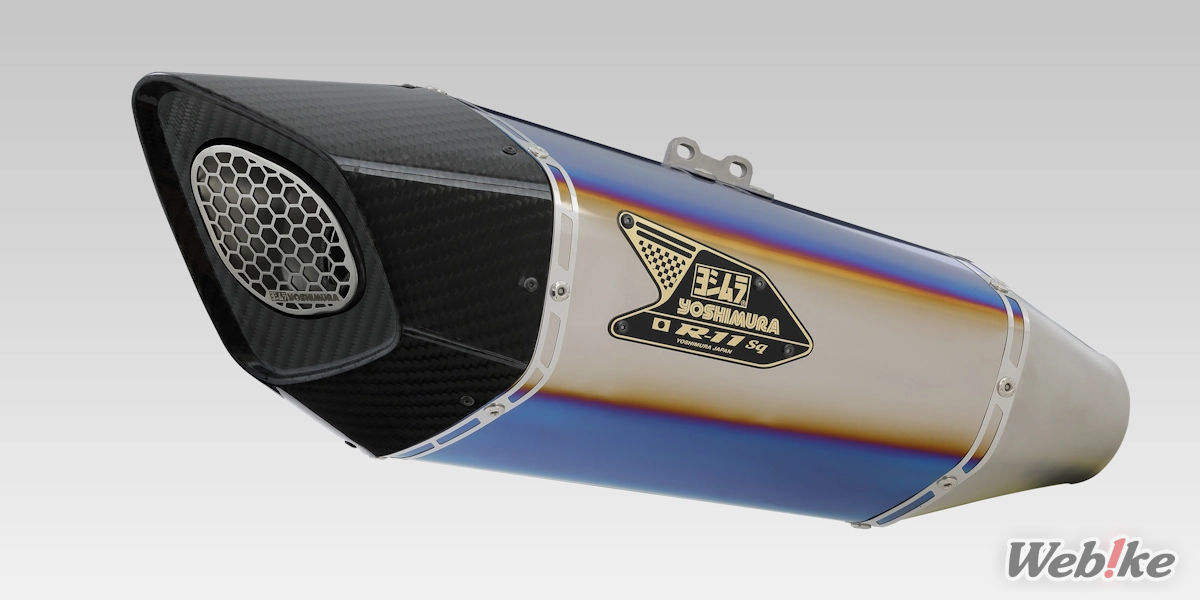Full exhaust for Hayabusa! A detailed look at YOSHIMURA’s ultimate masterpiece!
The release of YOSHIMURA's full exhaust for the Hayabusa was officially announced on July 14, and while it has naturally attracted a great deal of attention from Hayabusa owners, those who don't own a Hayabusa might not have had much interest in it. However, after taking a closer look, you will realize that it is truly the ultimate pinacle of YOSHIMURA technology. The more you know about it, the more you will regret not owning a Hayabusa.
The price is the talk of the town!
This YOSHIMURA full exhaust became a big topic of conversation when the price was announced as 500,000 JPY without tax! Even the "Hand Bent Straight Cyclone Duplex Shooter" for the Z900RS is priced at 260,000 JPY, so it's almost double that price. YOSHIMURA is best known for their exhausts, and this price is the most expensive among their current lineup. So the question is, why is the price so high? It can't just be because it's made of titanium. There's a much deeper reason...
Including two YOSHIMURA firsts!
As the heading says, this product has two features that are firsts for YOSHIMURA. They might not seem that new, since they have already been adopted by other brands, but that's not what's important here. YOSHIMURA exhausts are not only high performance but are also characterized by durability and solid structure that does not easily change over time. They are a manufacturer that places great importance on maintaining high performance for a long period of time, rather than just a burst of performance for a short period. This is likely due to their experience in endurance racing and other harsh racing environments. For example, if you use thinner pipe, lighter flange shape, and aim only at improving peak power, the figures in the catalog specs would be even more astonishing. However, that's not what YOSHIMURA is about. I can't claim to have seen every single exhaust released by them, but of the ones I have seen, I've never thought that any of them were poorly made. This full exhaust for the Hayabusa has also undoubtedly inherited this YOSHIMURA spirit. Even if the specs are already used by other companies, YOSHIMURA is different. This is very important to note if you are looking for something that will last a long time, especially for a flagship model like the Hayabusa. With the world moving toward electric vehicles, and the possibility that a new gasoline engine that can meet future emission regulations may not even be possible, it is no wonder that YOSHIMURA has put all the technology they have into this model to make it their best.
YOSHIMURA's first titanium exhaust plate
This is the first time YOSHIMURA has used this silencer structure with mesh at the end of the exhaust port. The hexagonal shape with a hole is a familiar design used in recent years in motoGP and the EWC (World Endurance Championship). Originally, this design was used to prevent gravel from entering through the exhaust outlet and damaging the engine in the event of a crash or going off course. It seems like this feature is only applicable for racing and thus using it on the street was just for looks, but YOSHIMURA adopted this structure because it was found to have a positive effect on optimizing exhaust pulsation and enabling linear acceleration work. This is one aspect that takes it's influence from the latest racing technology.


YOSHIMURA's first full titanium exhaust
There have been exhausts called "Full Titanium" made by YOSHIMURA in the past, so why are we saying that this is their first full titanium exhaust? Actually, although the past products were considered full titanium, stainless steel was used for parts that were likely to crack due to vibration and for some parts that had no direct relation to performance. Specifically, the perforated pipe inside the silencer is such a part, which is exposed to high-temperature exhaust gas and subject to severe vibration due to its location near the rear end of the bike body. For this part, stainless steel was used to provide the durability that you expect from YOSHIMURA. They knew that if it was made of titanium, it would have less durability and end up cracking in exchange for its light weight.
However, with this full exhaust for the Hayabusa, a true full titanium exhaust, including the perforated pipe, has finally been made. This is why we can say that it is YOSHIMURA's first "full titanium" exhaust. Full titanium silencers by other companies often crack over time, as YOSHIMURA had feared, but with this exhaust YOSHIMURA has finally solved this problem.

The performance is unquestionable!
The specific horsepower increase gained by installing this exhaust has not been disclosed, but a power measurement graph has been published. The graph clearly shows that power and torque are equivalent to the stock exhaust at the very low 2,000 rpm range, and from 5,000 rpm onward, they remain higher than stock all the way up to the 11,000 rpm rev limit. It would be a big mistake to look at this graph and think that it is not a big deal. It takes a tremendous amount of skill to make an exhaust that is significantly lighter than stock while delivering more power over such a wide range. Normally, the graph would not be this perfect. Not to mention that this graph is at full throttle. When you're actually riding, it is unlikely that you will suddenly open to full throttle from 2,000 rpm, and with the Hayabusa, you will most likely accelerate at half throttle or less in everyday situations, so you should be able to feel the power difference more than what this graph shows.

The details make it a work of art
As YOSHIMURA's first truly full titanium exhaust, with a silencer structure they have never used before, it can be said that this is their highest-class exhaust yet. The high price is not due to the added value of something like hand-bending. For this exhaust, the performance is top priority. As a result of aiming for the best in every aspect of performance, which is truly what Suzuki's flagship Hayabusa deserves, an extraordinary exhaust has been made... The Machine Bent R-11Sq R Dual Titanium Cyclone!

The pipes for this exhaust, which fit perfectly in this tight space are of course made of titanium. They merge in a 4-2-1-2 configuration, but where they come together as "1" is extremely short and appears to be only for exhaust interference reasons. The latest bender (machine bending equipment) is used to bend the extremely thick pipe beautifully without wrinkles and keep a perfectly circular cross section. As with other YOSHIMURA exhausts, the welding is also beautifully done.
















This is one hell of an exhaust!
If you had actually seen the prototype, you would know that I am not exaggerating. Even just what you can see on the outside is magnificent, and as an enthusiast, it brings me great joy to know that the parts you can't see are also so carefully considered, and of course the performance is top-notch. This exhaust is sure to become a milestone in YOSHIMURA history. If you are a YOSHIMURA fan and a Hayabusa owner, you definitely need to get it. Unfortunately, there is no other YOSHIMURA exhaust with such high specs, so if you are not a Hayabusa owner you'll have no choice but to wish you were. (Or switch over to the Hayabusa as a last resort!)

Product Specifications
Engine type: DXA1
Main Material: Titanium
Proximity exhaust noise: 91dB/4,850rpm
Acceleration noise: 81dB
TT (Titanium Cover)
List price: 500,000 JPY (Tax included: 550,000 JPY)
Part No.: 110-592-A18G0
Weight: 8.4kg (Stock 20.5kg) *Weight of the prototype
*Will be available in late October 2023

TTB (Titanium Blue Cover)
List price: 516,000 JPY (Tax included: 567,600 JPY)
Part No.: 110-592-A16G0
Weight: 8.4kg (Stock 20.5kg) *Weight of the prototype
*Will be available in late October 2023

Silencer bracket set for Machine-bent R-11Sq R Titanium Cyclone
Optional Part for Hayabusa
Part No.: 194-592-0030
List price: 25,000 JPY (Tax included: 27,500 JPY)
*Will be available in late October 2023


editor
Yo
Webike Japan's global merchandiser who is passionate about motorcycles. Born in Japan, and spent his childhood in the US. 25 years of riding experience mainly on the tarmac and motorcycle market. He loves products made in Japan and considers himself a "Japan Parts evangelist".







![[New Product] YOSHIMURA Machine Bent Dual R-11Sq R Titanium Cyclone Full Exhaust for the HAYABUSA now available!](http://global-fs.webike-cdn.net/@japan/magazine/wp-content/uploads/2025/03/yoshimura_hayabusa_01-1024x759.jpg?v=1741655520)

![[New Product] Make your Hayabusa soar! The first dry carbon parts from STRIKER for the HAYABUSA 3rd Generation, Aero Front Fender & Winglets now available!](http://global-fs.webike-cdn.net/@japan/magazine/wp-content/uploads/2025/01/STRIKER-Wing_01-1024x768.jpg)







![[New Product] High quality press molded Big Cedar Aluminum Fuel Tank for the SR400!](http://global-fs.webike-cdn.net/@japan/magazine/wp-content/uploads/2025/07/big-cedar_sr400-tank_01-1024x768.jpg?v=1752557544)